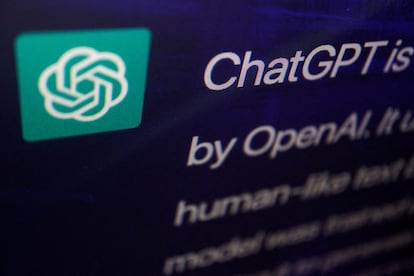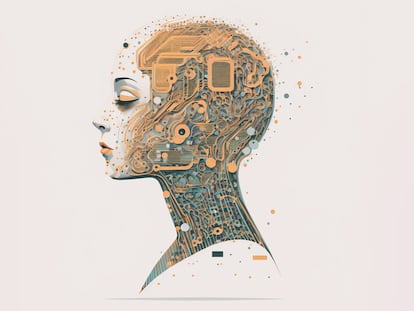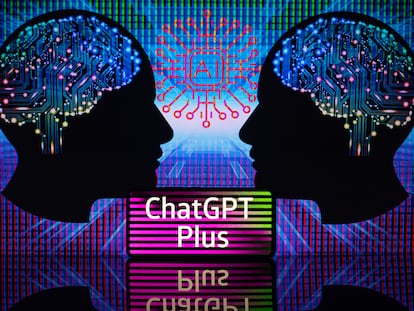ChatGPT: How to use it and what can it really do
Anyone can use this surprising and impressive artificial intelligence tool, created by OpenAI

ChatGPT is a system that really brings us closer to the possibilities of Artificial Intelligence. This machine learning model was created by OpenAI, a non-profit research laboratory, whose intention is to promote and develop user-friendly artificial intelligence, and thus bring them closer to this type of technology. The system, based on a simple chat platform, allows users to interact with it, asking it to answer questions or perform different tasks. But how wide are its possibilities? Let’s talk about this tool that gives us a glimpse of the future.
What is ChatGPT?
ChatGPT is a chatbot model which “which interacts in a conversational way,” according to Open Ai. “The dialog format makes it possible for ChatGPT to answer follow-up questions, admit its mistakes, challenge incorrect assumptions and reject inappropriate requests.”
Open AI says it launched ChatGPT as a research preview to “learn more about the system’s strengths and weaknesses and gather user feedback to help us improve upon its limitations.” The lab says that millions of people have provided feedback, which has enabled them to make significant updates.
ChatGPT Plus
ChatGPT Plus is a subscription plan for ChatGPT. It is priced at $20 per month. The benefits users have are: Anytime access to ChatGPT, faster responses, and priority access to new options and enhancements.
This version is available to customers in any country. OpenAI points out that this subscription system allows maintaining free availability for as many people as possible.
How to use ChatGPT?
Everyone can use ChatGPT. To access ChatGPT you can go to the official OpenAI website. There, look for the button that says Try ChatGPT. This will take you to a new window where you will be asked to confirm if you are a human through an automatic captcha.
ChatGPT will welcome you and ask you to login or register. If you are a first time user click on Sign Up. Use an email account and choose a password for your account. You will receive an email to verify your account. After verifying, return to the site where you will have to input your first and last name. Then you must give your phone number. The system will send you a confirmation text, which you will have to type on the site. If you do not receive the message, try the “resend” button or go back one step to check if you entered your number correctly.
With this account you will have access to ChatGPT. In a series of windows that will appear at startup, OpenAI mentions how the data is collected, and advises you not to enter private information (a tip worth following). You will also see a link to their Discord server, where you can share your feedback.
The next step is to start using it. The system will give you some examples on the home page, which you can select to enter the chat. If you want to start a chat, look for the button on the top left that says “New Chat” or type in the bottom bar.
You can start with a simple question, or even ask more complex questions.
What can ChatGPT do?
ChatGPT can keep a conversation going by remembering previous data you have mentioned, allows the user to correct it, and is trained to reject inappropriate requests. But that’s not all.
OpenAI says, “We’ve seen users find value across a range of professional use cases, including drafting and editing content, brainstorming, helping with programming, and learning new topics.”
ChatGPT has been shown to be able to perform a wide range of actions in addition to answering questions. It can write poetry, create a resume, a cover letter or even develop an essay, in addition to other types of texts, including homework, reports, among others. You can summarize research, understand and analyze complex topics. It is also capable of writing music, can help you with a vacation plan, and can give you personalized recommendations.
Among its most impressive capabilities is its ability to analyze programming code, offer solutions to problems within them, or build one from scratch. It can also perform complex mathematical problems and explain them step-by-step, which is one of the many academic ways it can be used.
Despite all its capabilities, it’s not perfect and it has some limits.
Limitations of ChatGPT
OpenAI admits that ChatGPT has some limitations. The system sometimes writes answers that sound plausible but are incorrect or do not make sense (this is because during its training it does not have a source of truth or because model learning prevents it from answering correctly). He is also sensitive to the way the instructions or the question is written. A simple change can change from an error to an appropriate answer.
Similarly, ChatGPT overuses multiple sentences, does not take care to ask questions for clarification, and can still respond to harmful instructions.
ChatGPT-4, the latest version of the system (which requires suscription) can “follow complex instructions in natural language, and solve difficult problems accurately”. This new version overcomes some of the limitations the system had, but it still have some problems.
Sign up for our weekly newsletter to get more English-language news coverage from EL PAÍS USA Edition
Tu suscripción se está usando en otro dispositivo
¿Quieres añadir otro usuario a tu suscripción?
Si continúas leyendo en este dispositivo, no se podrá leer en el otro.
FlechaTu suscripción se está usando en otro dispositivo y solo puedes acceder a EL PAÍS desde un dispositivo a la vez.
Si quieres compartir tu cuenta, cambia tu suscripción a la modalidad Premium, así podrás añadir otro usuario. Cada uno accederá con su propia cuenta de email, lo que os permitirá personalizar vuestra experiencia en EL PAÍS.
¿Tienes una suscripción de empresa? Accede aquí para contratar más cuentas.
En el caso de no saber quién está usando tu cuenta, te recomendamos cambiar tu contraseña aquí.
Si decides continuar compartiendo tu cuenta, este mensaje se mostrará en tu dispositivo y en el de la otra persona que está usando tu cuenta de forma indefinida, afectando a tu experiencia de lectura. Puedes consultar aquí los términos y condiciones de la suscripción digital.











































